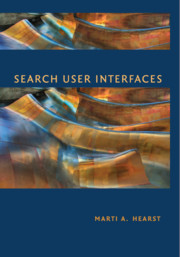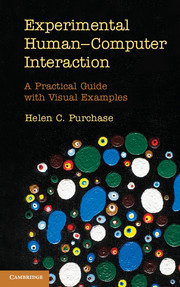Refine search
Actions for selected content:
2860 results in Computing and Society
Part III - Conversational Trends
-
- Book:
- Social Media Intelligence
- Published online:
- 05 February 2014
- Print publication:
- 24 February 2014, pp 67-68
-
- Chapter
- Export citation
1 - The Beginnings of Social Media Intelligence
- from Part I - Foundations
-
- Book:
- Social Media Intelligence
- Published online:
- 05 February 2014
- Print publication:
- 24 February 2014, pp 3-17
-
- Chapter
- Export citation
3 - Why Do We Share Our Opinions?
- from Part II - Online Opinion or Online Noise
-
- Book:
- Social Media Intelligence
- Published online:
- 05 February 2014
- Print publication:
- 24 February 2014, pp 37-52
-
- Chapter
- Export citation
Contents
-
- Book:
- Social Media Intelligence
- Published online:
- 05 February 2014
- Print publication:
- 24 February 2014, pp v-viii
-
- Chapter
- Export citation
2 - Fundamentals of Opinion Formation
- from Part I - Foundations
-
- Book:
- Social Media Intelligence
- Published online:
- 05 February 2014
- Print publication:
- 24 February 2014, pp 18-34
-
- Chapter
- Export citation
Frontmatter
-
- Book:
- Social Media Intelligence
- Published online:
- 05 February 2014
- Print publication:
- 24 February 2014, pp i-iv
-
- Chapter
- Export citation

Social Media Intelligence
-
- Published online:
- 05 February 2014
- Print publication:
- 24 February 2014

Search User Interfaces
-
- Published online:
- 05 March 2013
- Print publication:
- 21 September 2009

Experimental Human-Computer Interaction
- A Practical Guide with Visual Examples
-
- Published online:
- 05 August 2012
- Print publication:
- 23 July 2012
5 - Statistics
-
- Book:
- Experimental Human-Computer Interaction
- Published online:
- 05 August 2012
- Print publication:
- 23 July 2012, pp 116-181
-
- Chapter
- Export citation
1 - Introduction
-
- Book:
- Experimental Human-Computer Interaction
- Published online:
- 05 August 2012
- Print publication:
- 23 July 2012, pp 1-7
-
- Chapter
- Export citation
3 - Experimental procedure
-
- Book:
- Experimental Human-Computer Interaction
- Published online:
- 05 August 2012
- Print publication:
- 23 July 2012, pp 51-94
-
- Chapter
- Export citation
Appendix A3 - Factor analysis example
-
- Book:
- Experimental Human-Computer Interaction
- Published online:
- 05 August 2012
- Print publication:
- 23 July 2012, pp 227-234
-
- Chapter
- Export citation
Contents
-
- Book:
- Experimental Human-Computer Interaction
- Published online:
- 05 August 2012
- Print publication:
- 23 July 2012, pp vii-x
-
- Chapter
- Export citation
8 - Six principles for conducting experiments
-
- Book:
- Experimental Human-Computer Interaction
- Published online:
- 05 August 2012
- Print publication:
- 23 July 2012, pp 199-202
-
- Chapter
- Export citation
Acknowledgements
-
- Book:
- Experimental Human-Computer Interaction
- Published online:
- 05 August 2012
- Print publication:
- 23 July 2012, pp xiii-xiv
-
- Chapter
- Export citation
2 - Defining the research
-
- Book:
- Experimental Human-Computer Interaction
- Published online:
- 05 August 2012
- Print publication:
- 23 July 2012, pp 8-50
-
- Chapter
- Export citation
Bibliography
-
- Book:
- Experimental Human-Computer Interaction
- Published online:
- 05 August 2012
- Print publication:
- 23 July 2012, pp 235-236
-
- Chapter
- Export citation
4 - Data collection and qualitative analysis
-
- Book:
- Experimental Human-Computer Interaction
- Published online:
- 05 August 2012
- Print publication:
- 23 July 2012, pp 95-115
-
- Chapter
- Export citation
Index
-
- Book:
- Experimental Human-Computer Interaction
- Published online:
- 05 August 2012
- Print publication:
- 23 July 2012, pp 241-245
-
- Chapter
- Export citation
